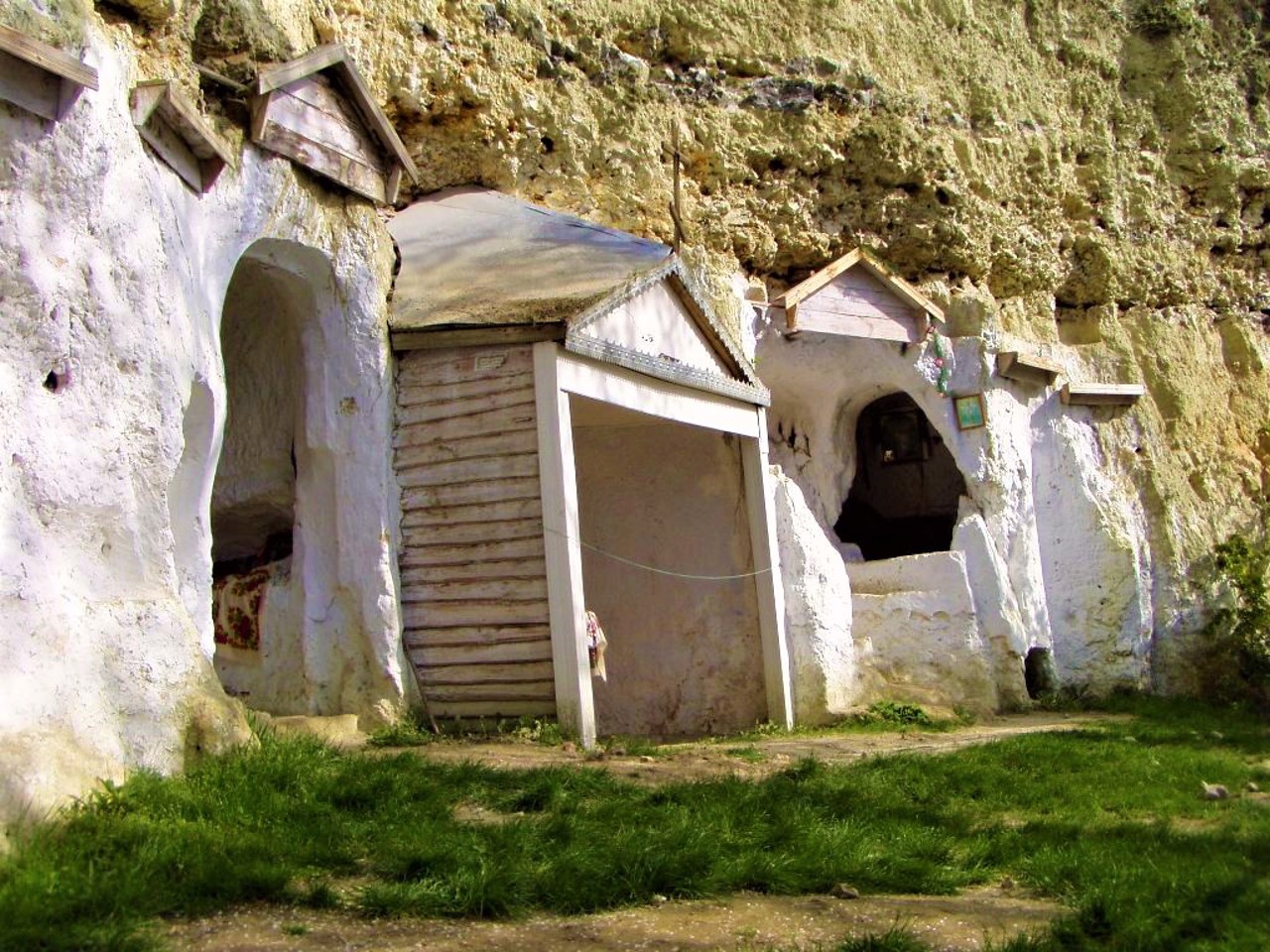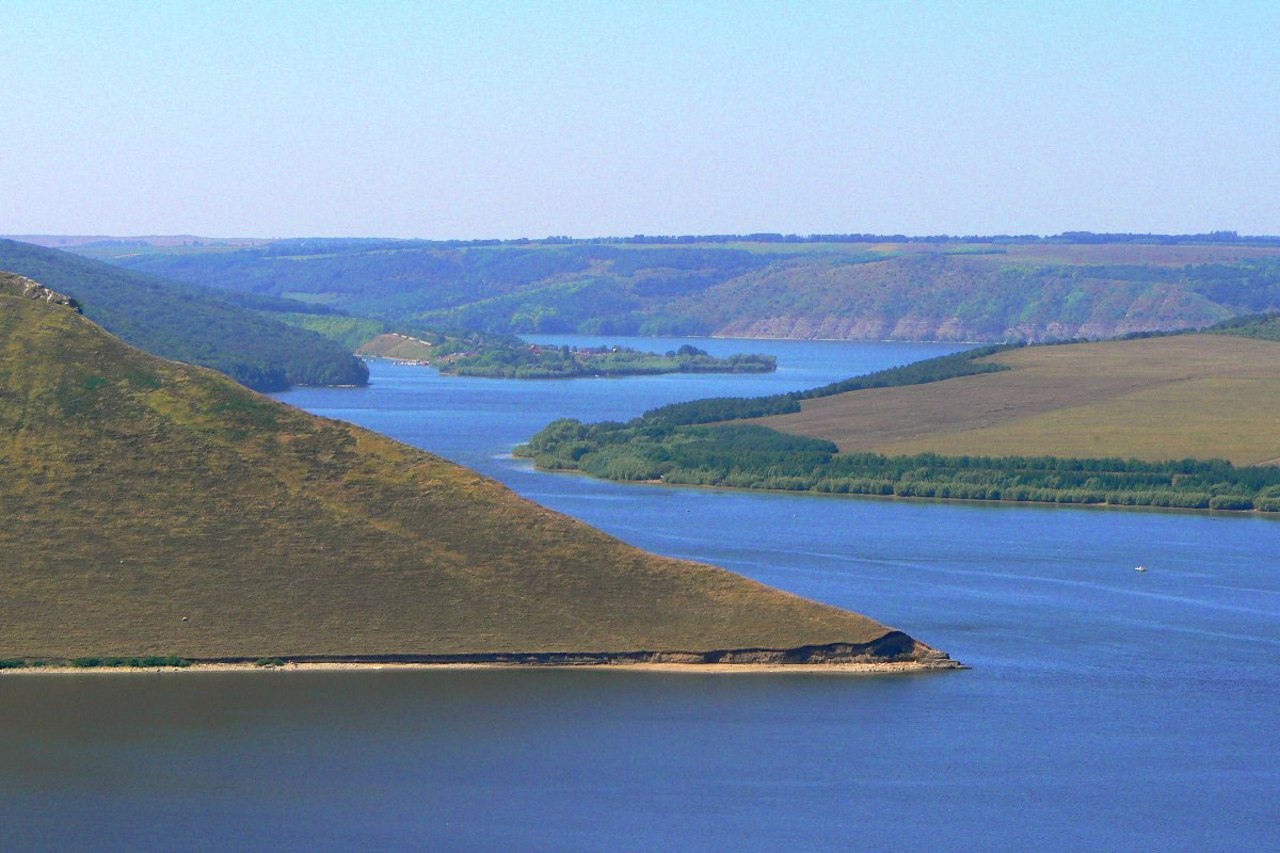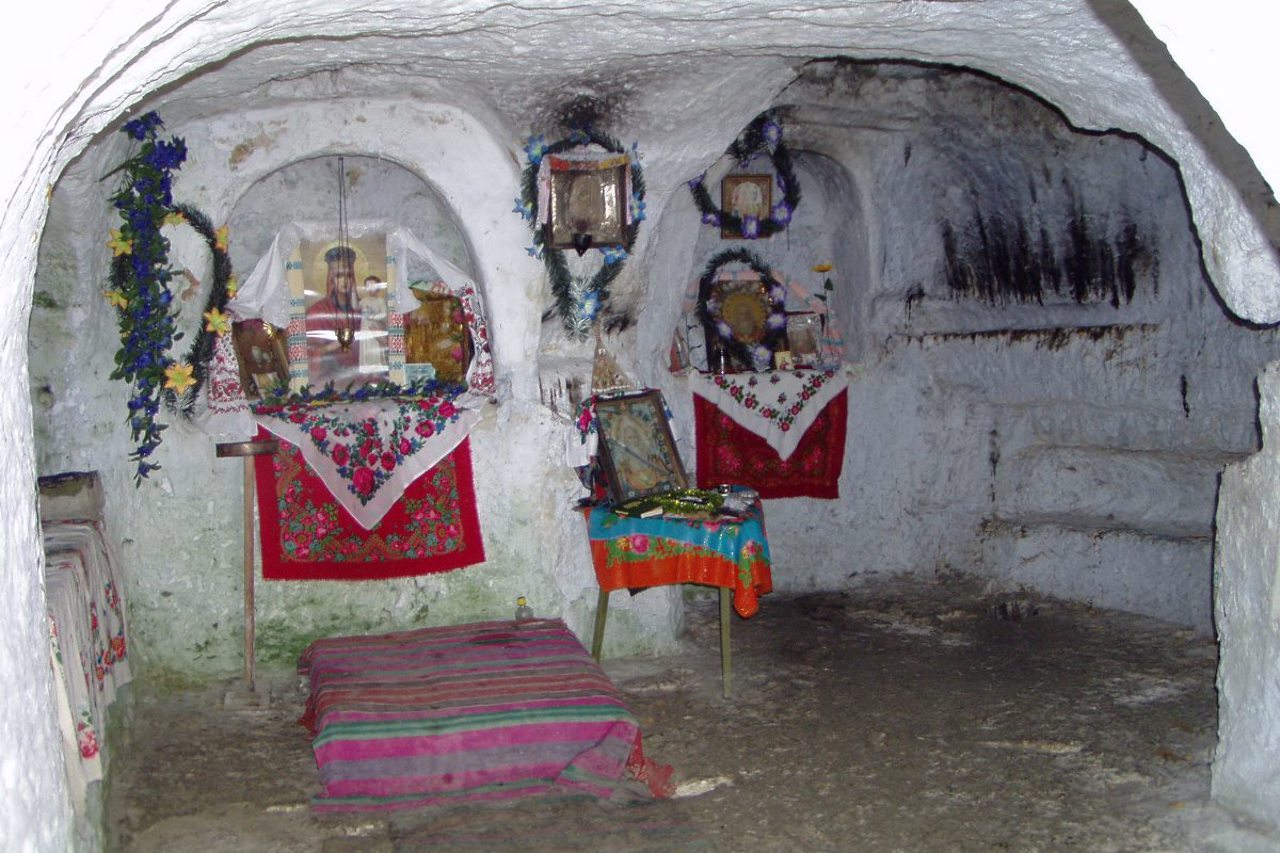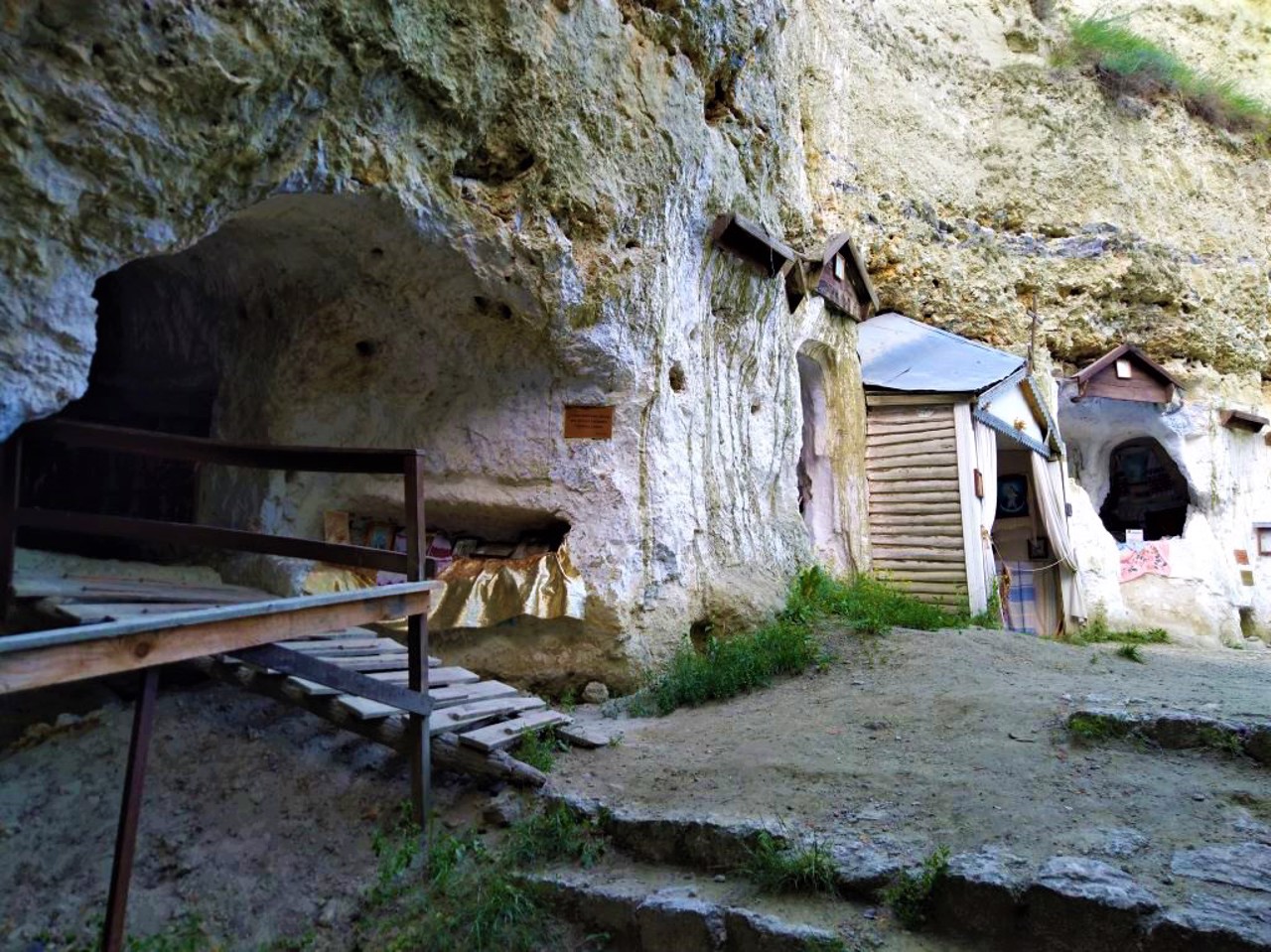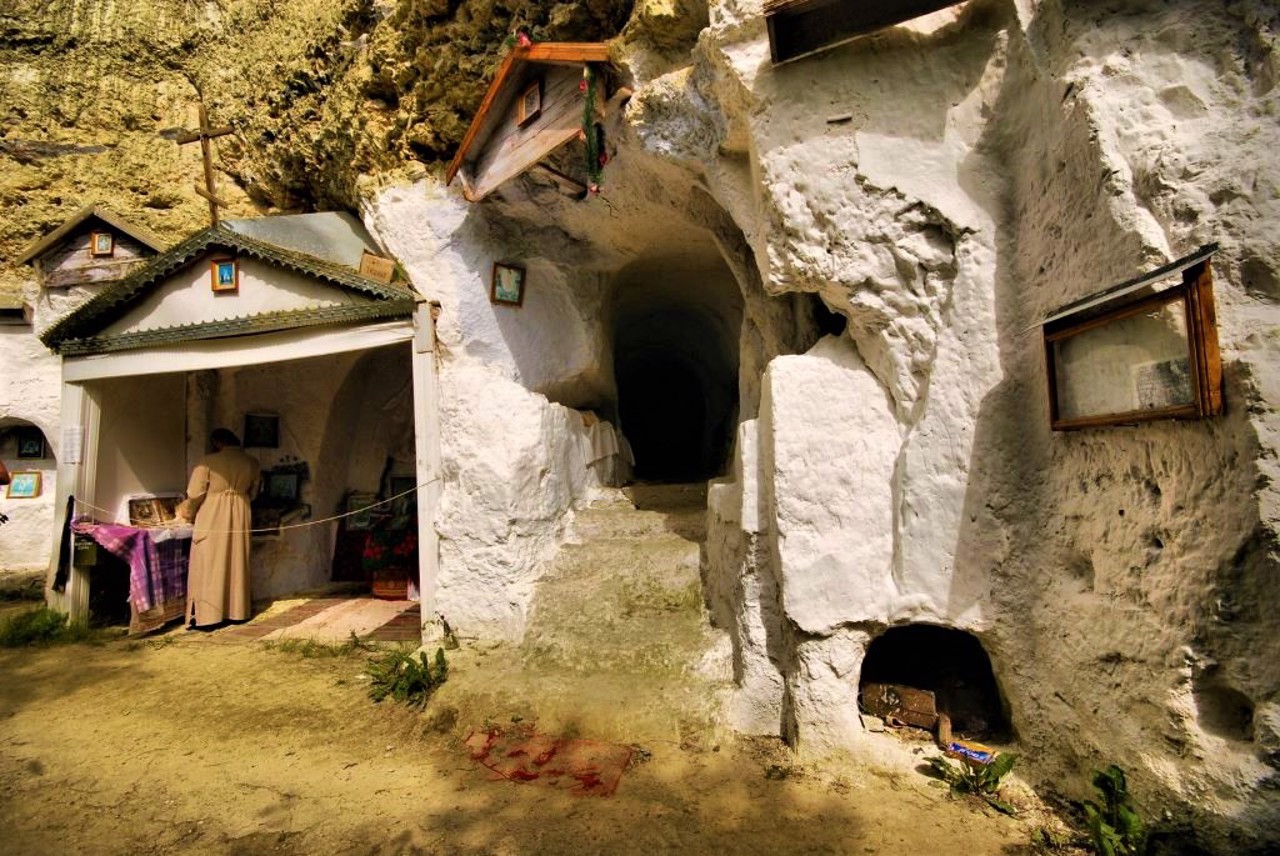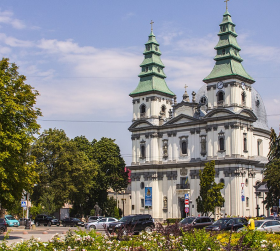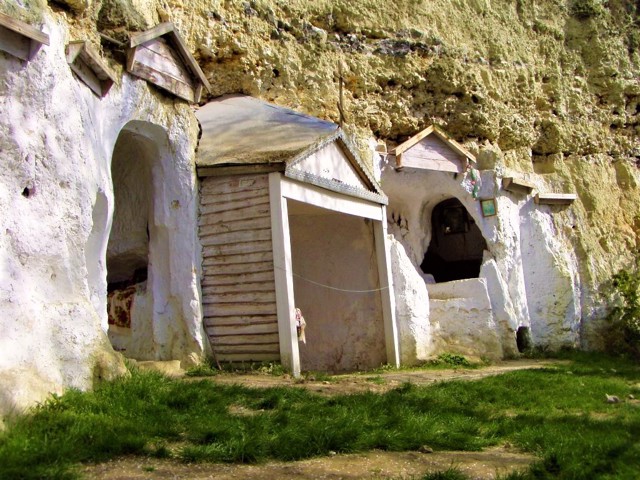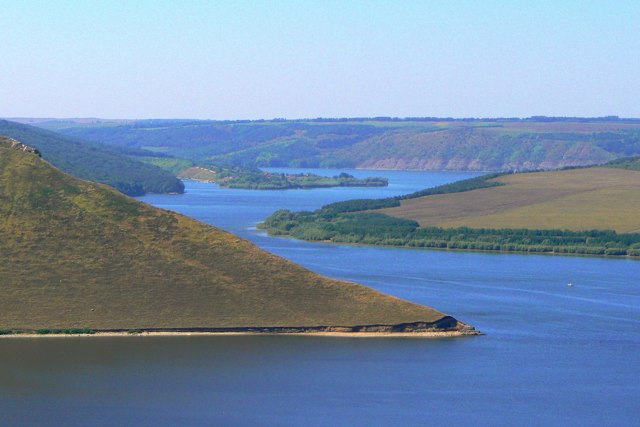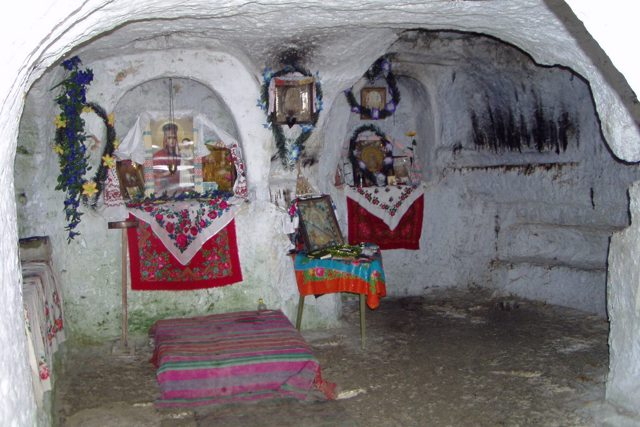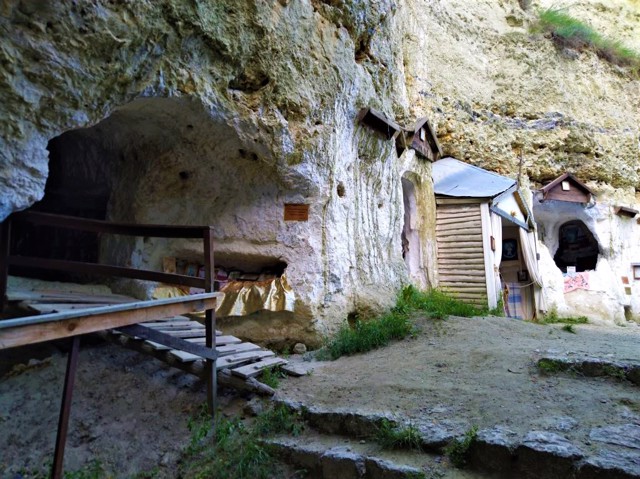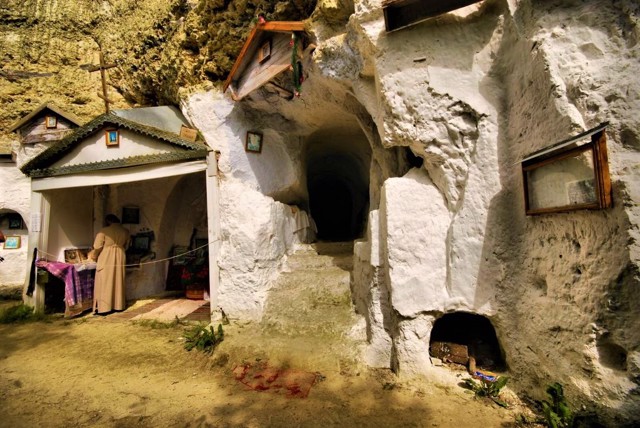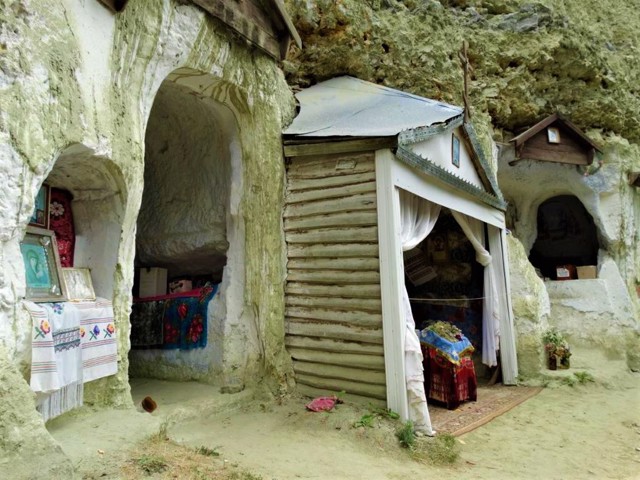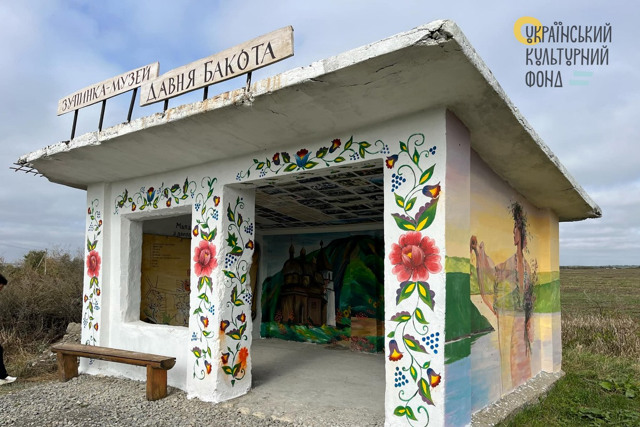Functional temporarily unavailable
Attractions of Ukraine
Attractions region
Attractions Khmelnytskyi region
Attractions Kamyanets-Podilskyi district
Attractions Horaivka
Bakota Saint Michael Cave Monastery
Bakota Saint Michael Cave Monastery, Horaivka
Historic area
Temple
General information about Bakota Saint Michael Cave Monastery (Horaivka)
Remains of the ancient Bakota Saint Michael Rock-Cave Monastery, known since 1362, are located on the steep slope of Bila Mountain above the Bakota Bay of the Dniester. Limestone mountain rises 120 meters above the river. This is one of the most popular tourist sites of the National Nature Park "Podilskyi Tovtry".
During the study of the preserved cells and the rock monastery church, an inscription, probably from the 11th century, was discovered, which mentions the founding of the monastery by Abbot Hryhoriy in honor of Saint Michael. It is considered the oldest on the territory of Podillya. It was a part of the great ancient Rus city of Bakota, which is mentioned in the XI-XIII centuries as the most i ...
Remains of the ancient Bakota Saint Michael Rock-Cave Monastery, known since 1362, are located on the steep slope of Bila Mountain above the Bakota Bay of the Dniester. Limestone mountain rises 120 meters above the river. This is one of the most popular tourist sites of the National Nature Park "Podilskyi Tovtry".
During the study of the preserved cells and the rock monastery church, an inscription, probably from the 11th century, was discovered, which mentions the founding of the monastery by Abbot Hryhoriy in honor of Saint Michael. It is considered the oldest on the territory of Podillya. It was a part of the great ancient Rus city of Bakota, which is mentioned in the XI-XIII centuries as the most important political and administrative center of the Dniester Ponyzzia, then Podillya, which was part of the Galicia-Volyn principality.
According to legend, during the invasion of the Tatar horde, the monks who hid in the caves, refusing to renounce their faith, were stoned alive.
The revival of the monastery in the 14th century was facilitated by the Lithuanian princes Koriatovychi (Koryatovychi), however, after the uprising of 1431, Bakota lost the status of a city, and soon the mention of the monastery disappeared from the annals.
The settlement of Bakota existed until 1981, when it was completely flooded with water during the construction of the Novodnistrovskaya HPP. The collapse of White Mountain in 1996 destroyed most of the caves with ancient Russian frescoes. The few ruins of Saint Michael's Church and the remains of caves can be seen only in one place on the mountainside.
A breathtaking panorama of the Dniester opens from here.
Every year on Makovey (August 14) in the revived Bakota Michael Cave Church, festive services are held with a large number of people.
Залишки стародавнього Бакотського Михайлівського скельно-печерного монастиря, відомого з 1362 року, розташовані на стрімкому схилі Білої гори над Бакотською затокою Дністра. Вапнякова гора здіймається над рікою на 120 метрів. Це один із найпопулярніших туристичних об'єктів Національного природного парку "Подільські Товтри".
При дослідженні келій і скельної монастирської церкви, що збереглися, було виявлено напис імовірно ХI сторіччя, в якому йдеться про заснування ігуменом Григорієм монастиря на честь Святого Михайла. Його вважають найстарішим на території Поділля. Був частиною великого давньоруського міста Бакота, яке згадується в XI-XIII сторіччях як найважливіший політико-адміністративний центр ...
Залишки стародавнього Бакотського Михайлівського скельно-печерного монастиря, відомого з 1362 року, розташовані на стрімкому схилі Білої гори над Бакотською затокою Дністра. Вапнякова гора здіймається над рікою на 120 метрів. Це один із найпопулярніших туристичних об'єктів Національного природного парку "Подільські Товтри".
При дослідженні келій і скельної монастирської церкви, що збереглися, було виявлено напис імовірно ХI сторіччя, в якому йдеться про заснування ігуменом Григорієм монастиря на честь Святого Михайла. Його вважають найстарішим на території Поділля. Був частиною великого давньоруського міста Бакота, яке згадується в XI-XIII сторіччях як найважливіший політико-адміністративний центр Дністровського Пониззя, потім Поділля, що входило до Галицько-Волинського князівства.
За легендою, під час нашестя татарської орди ченці, що сховалися в печерах, відмовившись зректися своєї віри, були замуровані живцем.
Відродженню монастирю в XIV сторіччі сприяли литовські князі Коріатовичі (Корятовичі), проте після повстання 1431 року Бакота втратила статус міста, а невдовзі з літописів зникли і згадки про монастир.
Населений пункт Бакота проіснував до 1981 року, коли під час будівництва Новодністровської ГЕС він був повністю затоплений водою. Обвал Білої гори в 1996 році знищив більшу частину печер із давньоруськими фресками. Нечисленні руїни Михайлівської церкви та залишки печер можна оглянути лише в одному місці на схилі гори.
Звідси відкривається захоплююча панорама Дністра.
Щороку на Маковея (14 серпня) у відродженому Бакотському Михайлівському скельному храмі при великому збігу людей відбуваються святкові богослужіння.
Practical information about Bakota Saint Michael Cave Monastery (Horaivka)
Last update
3/12/2025
| Categories | Historic area, Temple |
|---|---|
| Date of foundation | 1362 |
| Address |
Bakota tract
Horaivka |
| Coordinates |
48.58579° N, 26.99853° E
|
| Official site |
http://bakota.com.ua/travel/ |
| Additional services |
Аccessibility information
Have you visited Bakota Saint Michael Cave Monastery in Horaivka?
Add practical or descriptive information, photos, links
What to see, where to go next?

